Adam McDade
Tattooist at Triplesix Studios
AHRC NPIF Funded PhD Research Student at The University of Sunderland
|
This article was written by Adam McDade and edited by Justine Morrow, and originally appears on the 'Tattoodo' website. What is shown here are screenshots of the article from where it was originally published. The original article can be found here: tattoodo.com/a/2019/07/giving-form-to-the-intangible-meaning-and-transformation-in-tattooing/
0 Comments
The imagery shown depicts the production of my first full tattoo ever produced (though not on human skin). The task involved taking a piece of what is referred to as ‘flash’ (pre-drawn tattoo designs that traditionally hang on the walls of tattoo shops to be selected by clients) by Sailor Jerry - a central and seminal figure in traditional Western tattooing, and tattooing as a broader discipline. Traditional tattooing can be considered simple and graphic in aesthetic, as designs where created in keeping with the capabilities of the available tools of the time (early 20th century). Contemporary tattoo machines are significantly more sophisticated in their design, which has lead to new aesthetic possibilities within tattooing practice. Traditional tattooing remains as a timeless aesthetic however, and is considered relatively simple to execute (though more difficult to design). The task was assigned in order to progress from the mark making stages of the previous fake skin explorations, into tattooing a design to be considered for its visual properties. The traditional Sailor Jerry rose was deemed appropriate for the early level of competence, and provided a strong foundation to practice lining, ‘whip-shading’ and colour packing. Lining refers to the black line that is the basis of the tattoo design. Good linework is judged on consistency and ‘cleanness’ (i.e. no evidence of wobble in the line, a consistent width of line, etc.). ‘Whip-Shading’ is the name given to the technique to produce gradated tone usinga tattoo machine. This is done by lowering the voltage of the tattoo machine from that which would be suitable for lining (a higher voltage), to allow the shape of the needles to create an aesthetic comparable to dots. The needle used to produce line- work may often be changed for what is referred to as a ‘magnum’ - a larger grouping of needles arranged in such a way that they cover a greater surface area of the skin. The term ‘whip’ refers to the motion of the hand to create a sense of gradation - the needle is inserted and pushed away from the surface at a fast pace, comparable to techniques used with a dry brush and ink on paper. During the tattooing of the fake skin, the booth (the area in which the tattoo takes place) was set up as it would have been had the tattoo been on human skin. This involves wearing gloves and using a medical grade cleaning product to wipe down all surfaces that may be touched by the tattooist or the client during the process. These may be the trolley (a metal unit that holds the filled ink caps, power supply, kitchen towels etc.), arm rest, and/or the massage bed. Once cleaned, the gloves are then binned and changed, before re-spraying the surfaces. This acts as an extra hygiene precaution, while also functioning as an adhesive for cling film that is then wrapped around each unit. Once the trolley is wrapped, a stack of kitchen paper and a packet of baby wipes are then placed on top of the trolley, which are used to wipe away ink/bodily secretions that occur in the tattooing process. A disposable cup filled with filtered water and often anti-bacterial soap/witch-hazel is also added, to rinse needles when changing co- lours of inks using the same needle. A small amount of petroleum jelly is then applied to the station using a tongue dispenser, which acts as both a adhesive for ink caps and sometimes as a moisture agent that can be applied to the clients skin once an area of tattooing has been completed. Ink caps are placed onto the area where the petroleum jelly has been spread, which are filled with the inks that will be used for the tattoo. A disposable razor is also applied to the station, to shave any hair that is in the area of the tattoo, prior to the tattooing process beginning. A yellow medical waste bag is secured to the trolley using either micro-pore tape or magnets, which is disposed of after each client in a medical waste bin (though only a regular bin bag was used for tattooing of fake skin). The machine power supply is then ‘bagged’ with a disposable plastic wrapping, in addition to the cables that are attached to the tattoo machine. Once wrapped, the machine is placed on the trolley. The tattoo machine is often also wrapped with cling film, and is cleaned with alcohol wipes after each use. The ‘tube’ for tattooing, which is the attachment to the machine that holds the needle and is gripped during the tattooing process, is either disposable or can be cleaned using an autoclave. Tattooing a full design similar to that pictured, from outline to finish, may take many artists around 90 minutes, however due to my inexperience it took around 4 hours. What was learned in the initial exercises was implemented in regards to hold- ing the machine in such a way that the finger regulates the depth, working from the bottom left to top right of design to avoid rubbing off the stencil, and being sure to stretch the area with the non-tattooing hand so that the area being tattooed is taught, thus saturated. Adam McDadeApprentice Tattooist and PhD Research Student |
Beyond the Epidermis: Research Blog
A document of my experience working as a tattooist at Triplesix Studios, while also serving as a platform for my AHRC NPIF funded research as a PhD student in Design at the University of Sunderland. Archives
May 2020
Categories
All
|
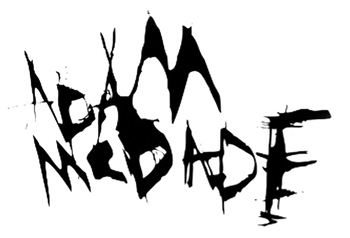
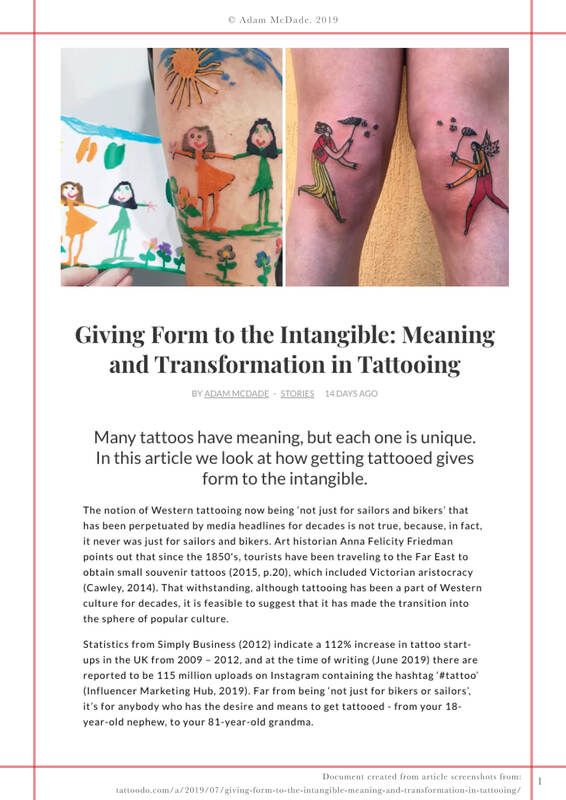
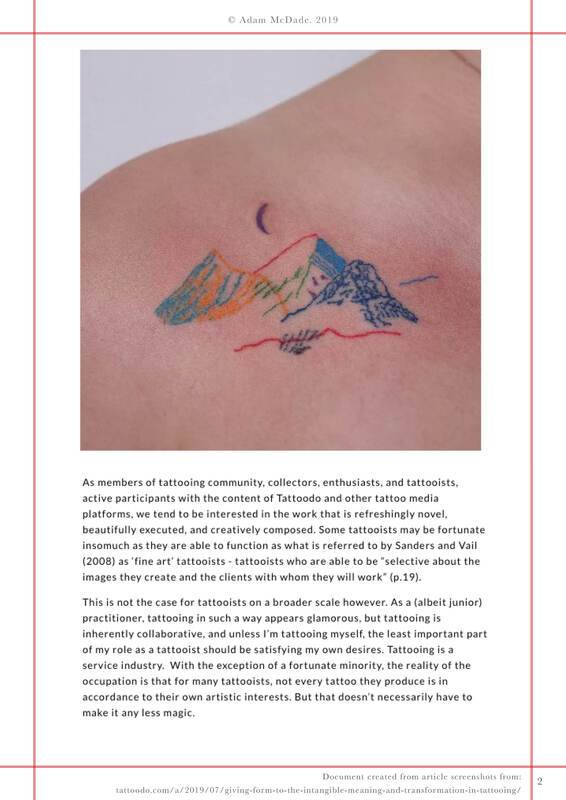
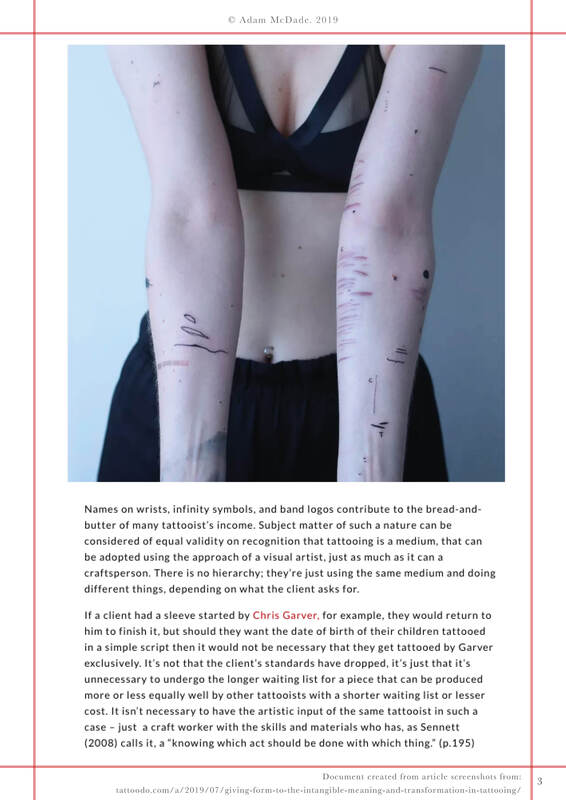
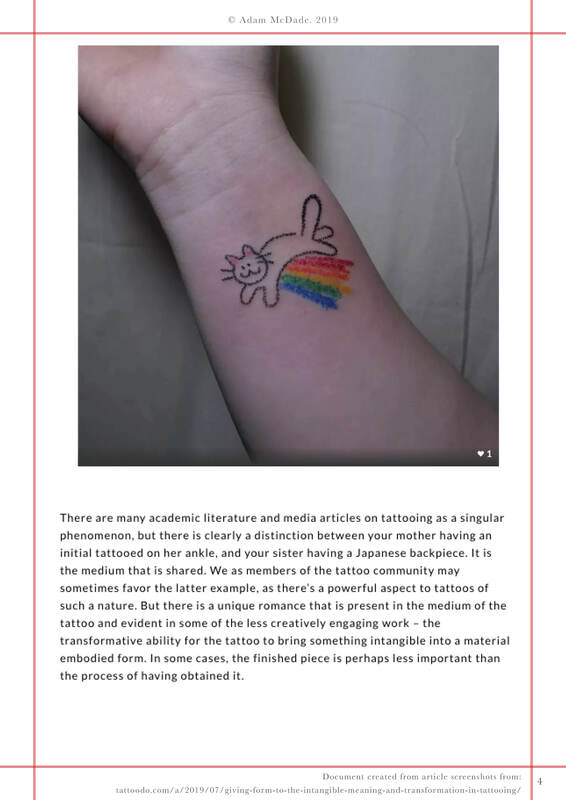
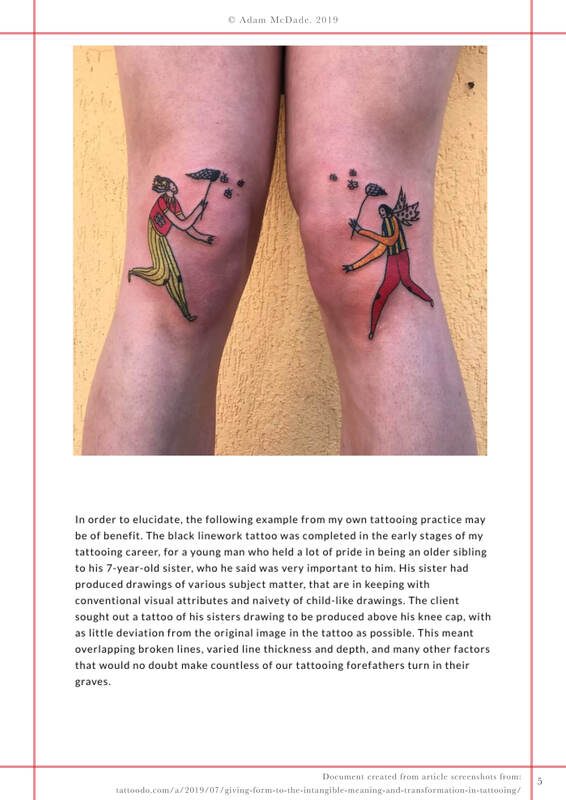
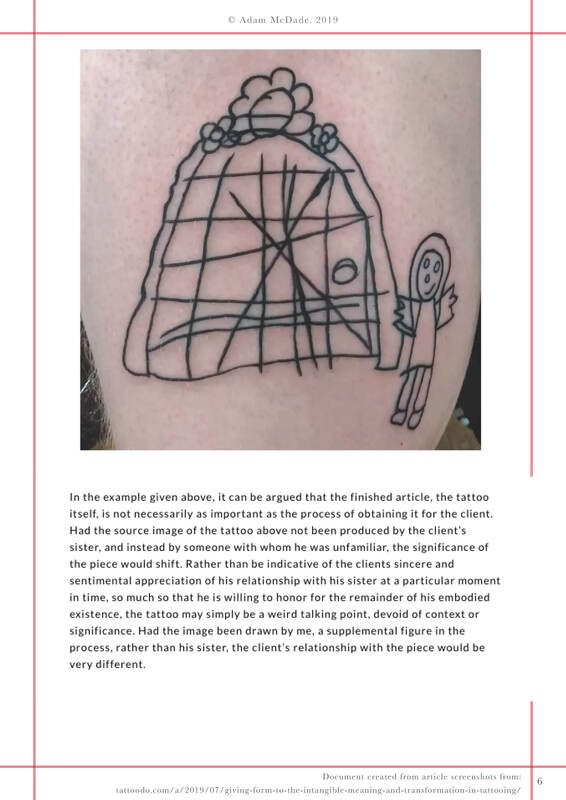
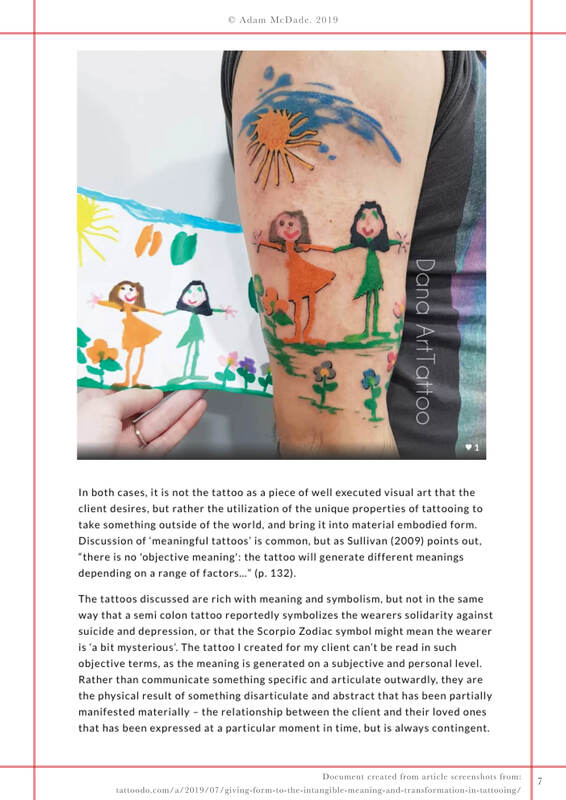
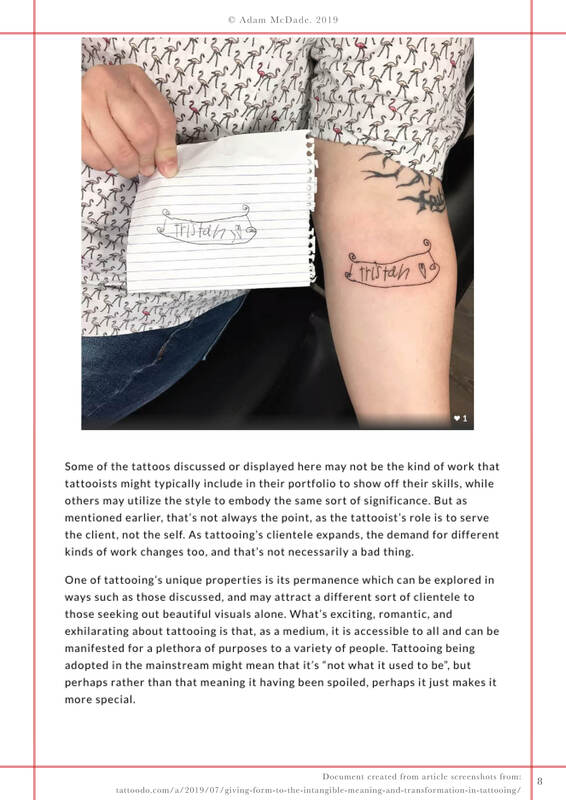
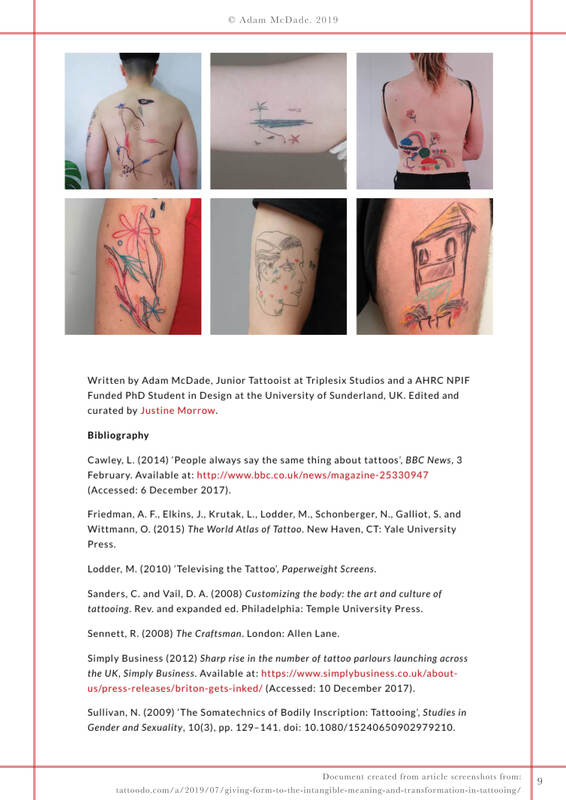
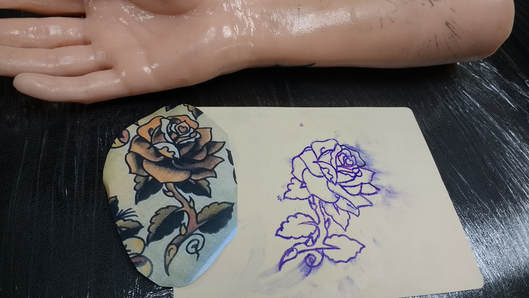
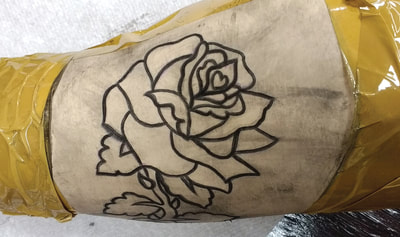
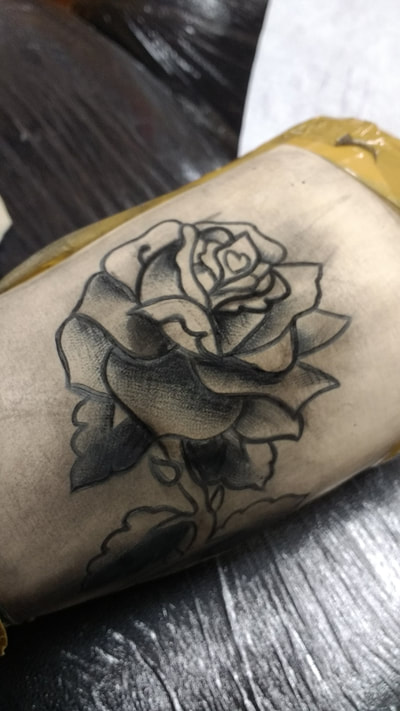
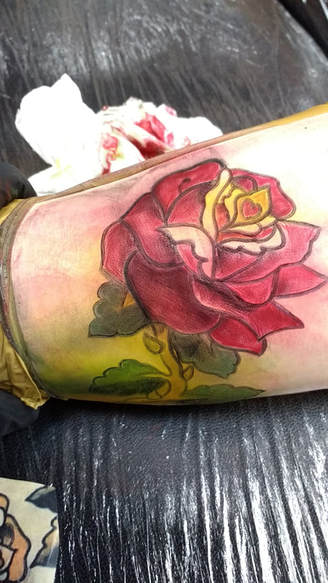
 RSS Feed
RSS Feed
